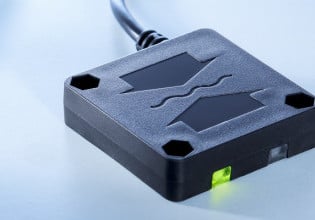Women in Engineering: Organizations and Influential Figures
Let’s explore the challenges facing women in science, technology, mathematics, and engineering, the organizations supporting these women, and some modern-day, influential role models.
To study engineering in higher education, math and physics are essential, but fewer women are studying these topics at a foundational level than is needed to bridge the gender gap. What challenges do women face in science, technology, engineering, and mathematics (STEM) education, and how is the gender imbalance being addressed?

The gender gap in STEM is still prominent in both education and the workplace. How might society encourage diversity and equity in STEM? Image used courtesy of Adobe Stock
Challenges Facing Women in STEM
In our previous article, we explored some factors contributing to the gender gap in STEM, particularly in engineering and computer science fields. These factors include unconscious gender biases and the lack of female role models in engineering and mathematics. Engineering, mathematics, and computer science are viewed as male-dominated fields, and gender stereotypes perpetuate a belief that girls’ math abilities are not at the same level as boys' abilities, even from preschool years.
AAUW Recommendations
The American Association of University Women (AAUW) provides key recommendations for addressing the gender imbalance in STEM in its comprehensive report, Solving the Equation.
One way to encourage women to pursue an education and career in STEM is to break down gender biases. The AAUW believes in introducing influential female role models during early learning years. This could help break down implicit bias amongst males and females in later working life. If young boys and girls see positive female influencers as they grow up, men may be less likely to discriminate against women.
The report also suggests that employers and managers can remove information concerning gender from evaluation situations and hire candidates based on past merits and performance when possible. They can also take steps to heighten their awareness of their potential gender biases by taking a test such as the Implicit Association Test (IAT) provided by Harvard. This test may also be a good point of reference for workplace employees.

There are a number of organizations that provide resources and support for women pursuing an education or career in STEM. Image used courtesy of ARC Network
Supportive Organizations for Women
The AAUW is just one of many organizations focused on addressing the gender gap in STEM. It provides key learning resources to women in STEM, including essential tools and training. Women can join the AAUW and access leadership training, tools for salary negotiation, information for managing and growing personal finances, and career-boosting skills.
The Women in Engineering Pro-Active Network is another supportive organization that aims to enhance diversity and help create a culture of inclusion for women seeking an education or career path in various engineering fields. One of the not-for-profit’s strategic initiatives includes the ADVANCE Resource and Coordination Network, a STEM equity brain trust that brings together individuals from government, industry, academia, and professional societies to enrich diversity in STEM through knowledge sharing and research collaboration.
Other organizations and associations advocating for diversity in STEM include the IEEE Women in Engineering, Association of Women in Mathematics, and Association of Women in Computing.
Influential Women in Engineering
While the gender gap in engineering persists, there is no shortage of influential women.
Johns Hopkins' Associate Professor and Carol Croft Linde Faculty Scholar Dr. Dennice Gayme is just one example of an influential woman in the world of engineering. In 1997, Gayme graduated from the University of Ontario with a bachelor’s degree in mechanical engineering and society. Towards the latter part of her academic career, Gayme went on to pursue a Ph.D. in control and dynamical systems at the California Institute of Technology in 2010.

A photo of Associate Professor Dennice Gayme. Image used courtesy of Johns Hopkins
Gayme is currently undertaking research in the design, control, and modeling of distributed systems. Gayme and her research team use theoretical and computational models to study spatially and interconnected distributed systems. Her research interests include modeling turbulence in wind farms and integrating sources of renewable energy into the grid.
Another role model for young and aspiring engineers is the Deputy Manager of the Mission Integration and Operations Office at NASA’s Johnson Space Center (Houston), Laura Shaw. Shaw left Purdue University (Indiana) with a bachelor’s degree in mechanical engineering and sought an internship as part of NASA Pathways. Shaw has since gone on to develop water systems and flight hardware for the International Space Station (ISS) and Space Shuttle. Since joining the ISS Program Office in 2012, Shaw has led a team in upgrading the Environmental Control and Life Support Systems on the ISS.
Women in STEM
While the gender gap in STEM fields, particularly engineering, remains significant, organizations such as the AAUW and Women in Engineering Pro-Active Network provide resources to support and encourage women to pursue an education and career in STEM. As proposed by the AAUW, doing away with gender biases, exposing young learners to influential women in STEM, and encouraging companies to ensure a fair hiring practice and workplace are just some of the steps that can be taken to promote diversity and inclusion in education and the workplace.






